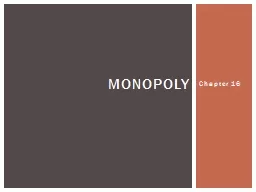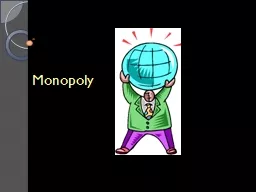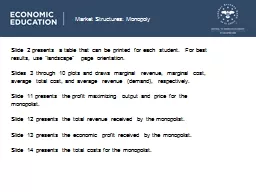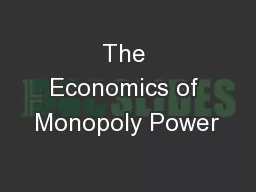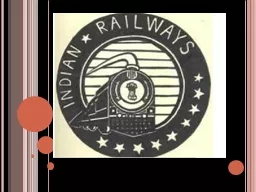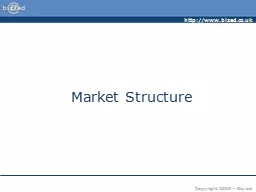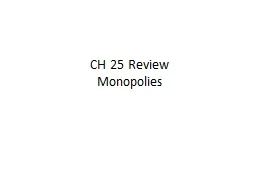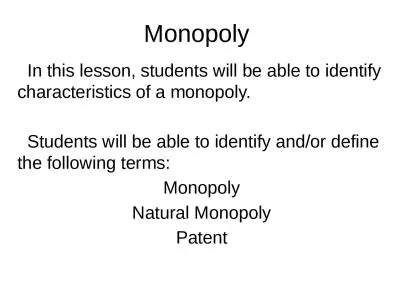PPT-Chapter 16 Monopoly Market characterized by:
Author : kittie-lecroy | Published Date : 2018-11-25
One firm selling good or service with no substitutes Barriers to entry that prevent competition from new firms What is a monopoly Monopoly in the news Natural One
Presentation Embed Code
Download Presentation
Download Presentation The PPT/PDF document "Chapter 16 Monopoly Market characterized..." is the property of its rightful owner. Permission is granted to download and print the materials on this website for personal, non-commercial use only, and to display it on your personal computer provided you do not modify the materials and that you retain all copyright notices contained in the materials. By downloading content from our website, you accept the terms of this agreement.
Chapter 16 Monopoly Market characterized by:: Transcript
Download Rules Of Document
"Chapter 16 Monopoly Market characterized by:"The content belongs to its owner. You may download and print it for personal use, without modification, and keep all copyright notices. By downloading, you agree to these terms.
Related Documents

